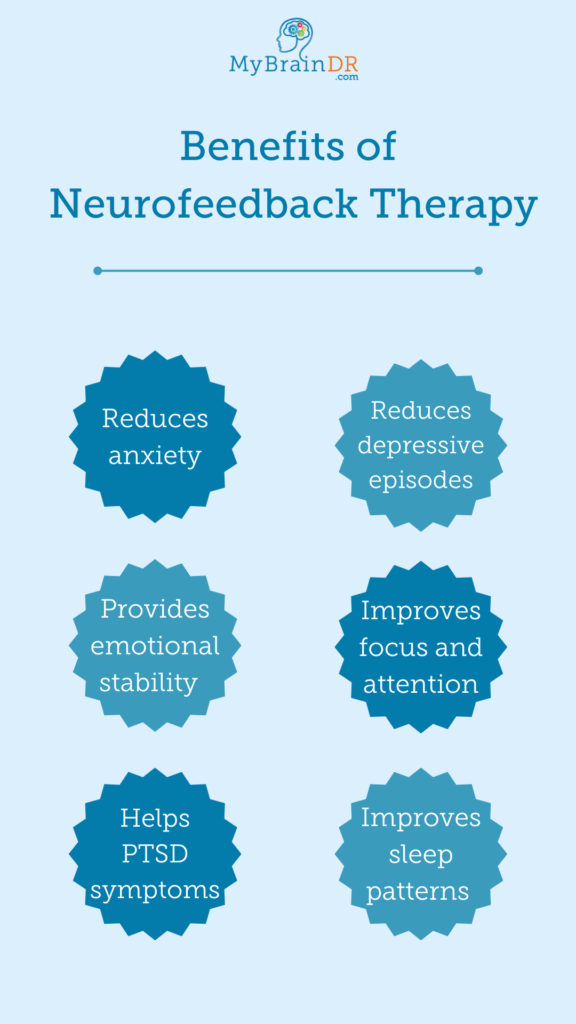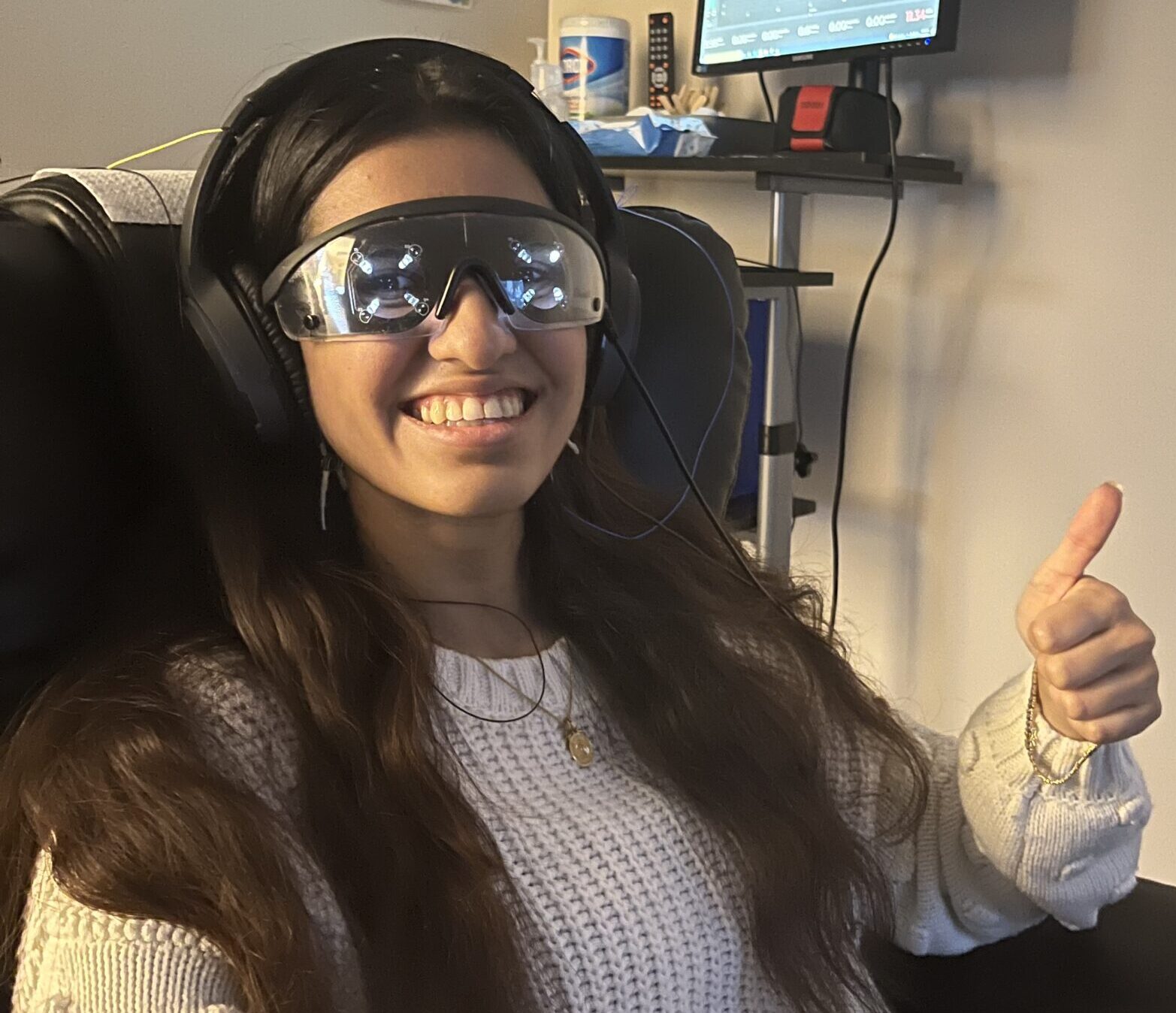Looking to get started with your first neurofeedback session? Let’s make sure that you have completed these steps first.
Free evaluation? Check. Brain Scan? Check. Customized Treatment Plan? Check!
Now you are all set to start neurofeedback sessions. Welcome to MyBrainDr! This post serves as a guide on what to expect for neurofeedback sessions. Neurofeedback is used to address various conditions, including ADHD, anxiety, depression, PTSD, and more. The goal is to teach individuals to self-regulate their brain activity, leading to improvements in symptoms and overall well-being.
When entering our office, you will be taken to one of our equipped rooms by our awesome technicians where you’ll see a TV, computer, comfy chair, and footrest. Grab a blanket, sit back, and get nice and comfortable!
The first session will mimic every session following and it starts by hooking you up to our neurofeedback equipment consisting of small sensors or leads. These sensors are typically placed in specific locations to monitor electrical activity in the brain and vary based on a customized treatment protocol. The protocols that Dr. Baric provides are specific frequencies to guide the brain toward and are numbered for labeling purposes. Once the sensors are in place, they pick up electrical signals produced by the brain. These signals are known as EEG (electroencephalogram) readings and provide real-time data on brainwave patterns.
While you enjoy a show or movie for the next 30 minutes the EEG readings are processed by a computer and displayed on the monitor behind you in real-time. As you successfully produce the desired brainwave patterns, you receive positive reinforcement through the feedback system (the TV).
What’s happening is the screen will get brighter when brainwave activity aligns with the target pattern and will essentially “fade” throughout the entire session getting dim at times. We will be able to see brainwave activity represented visually showing the brainwaves at that specific location on the scalp. This feedback can take various forms but here at MyBrainDR, we look at the brainwaves graphically.

What The Brainwaves Mean
On this graph, you will see an array of dashed and solid lines with distinguishing colors which we are measuring at the left and right hemispheres of the brain. The white lines are Delta brainwaves, these are the waves that are produced mostly during times when one is sleeping, relaxed, or deeply meditating. These waves are essential for restoration and rejuvenation.
The green lines are Theta brainwaves, like Delta, these waves are produced mostly when you are relaxing or sleeping but can indicate dreaming and focus. These brainwaves for more inwardly focused and as dreams become more focused and energetic brainwaves go from resting delta to active theta.
Blue lines are Alpha brainwaves, they are mostly produced during times of alertness but doing a restful thoughtful activity like reading, relaxing, or praying. Think of any activity that you use to wind down from the day, that’s when you are in an alpha state.
Lastly, the red and yellow lines are Beta brainwaves, they are produced during most waking hours. Beta brainwaves are seen in activities like working, thinking, doing homework, and anything that needs active attention.
These brainwaves, however, can be misaligned or irregular. We often see brainwave irregularities in the different conditions we treat like ADHD, Autism, Depression, Anxiety, and more.
The Treatment Plan
The initial brain scan provides Dr. Baric with a snapshot of the types of brainwaves produced in different areas of the brain to look for any irregularities. During the scan review, Dr. Baric learns about any history, symptoms, and goals for treatment. Based on all this information, a treatment plan is designed to encourage desirable brainwave patterns and discourage undesirable ones. For example, if someone is seeking to reduce anxiety, they may work on increasing their production of calm, relaxed brainwave patterns.
An Added Boost
An added benefit offered is photic stimulation. Sometimes we simply refer to this as “the flashing glasses”. These special glasses use controlled light stimulation to influence brainwave patterns, mood, cognitive function, and other physiological responses working synergistically with neurofeedback sessions. While they have shown significant promise in various applications, their use should be guided by professional advice and careful attention to safety precautions. A technician will go over a list of questions at the beginning of the neurofeedback session to gauge whether glasses should be used or not. Wearing photic stimulation glasses is not a requirement but can be a great boost to neurofeedback treatment sessions.
After a quick 30 minutes of a favorite show with a cozy blanket, a neurofeedback technician will assist with cleaning up the scalp before leaving. We’ll see you back here at MyBrainDr for the next session!





